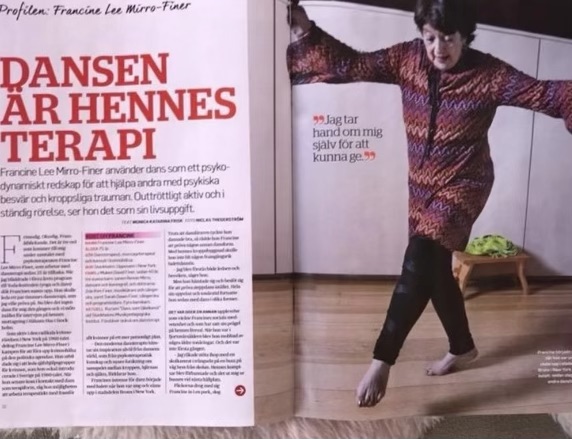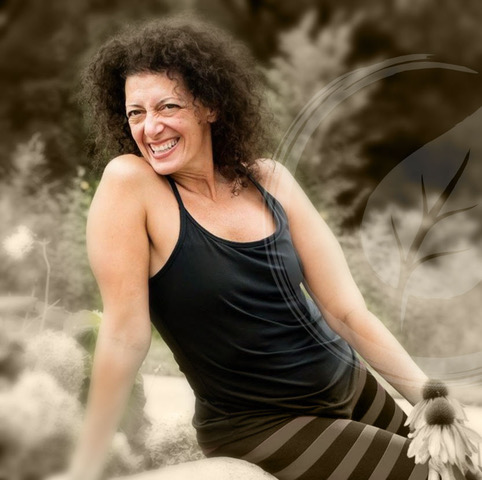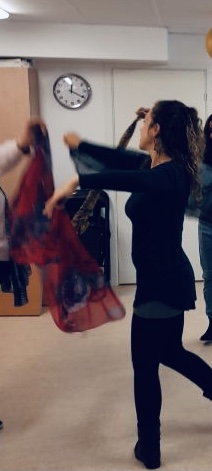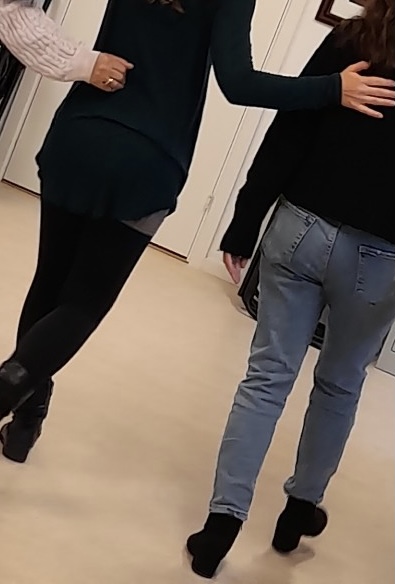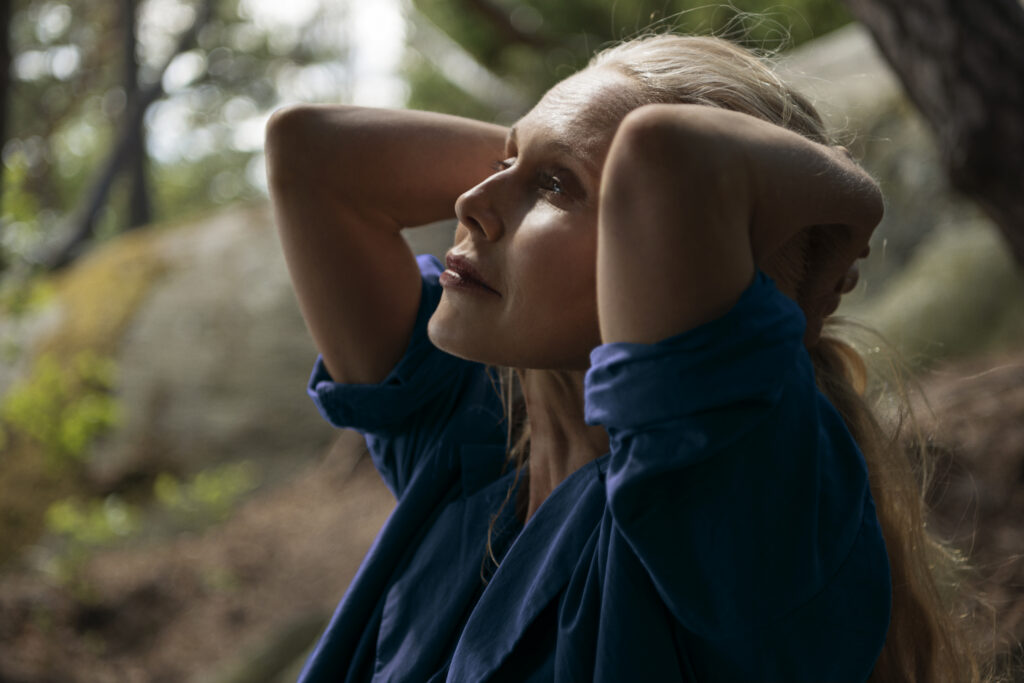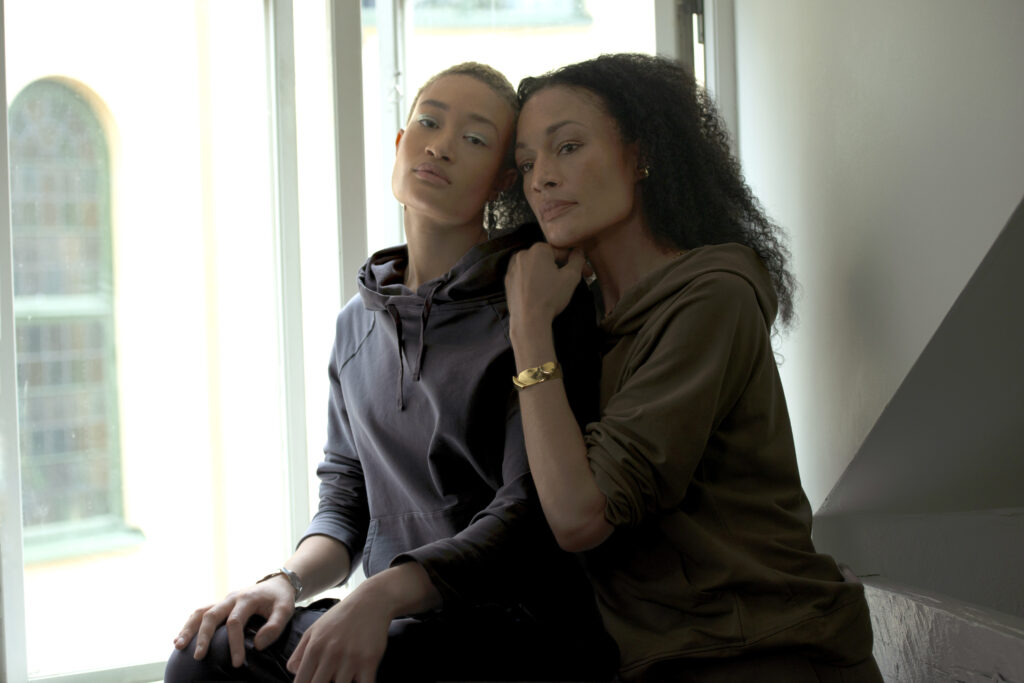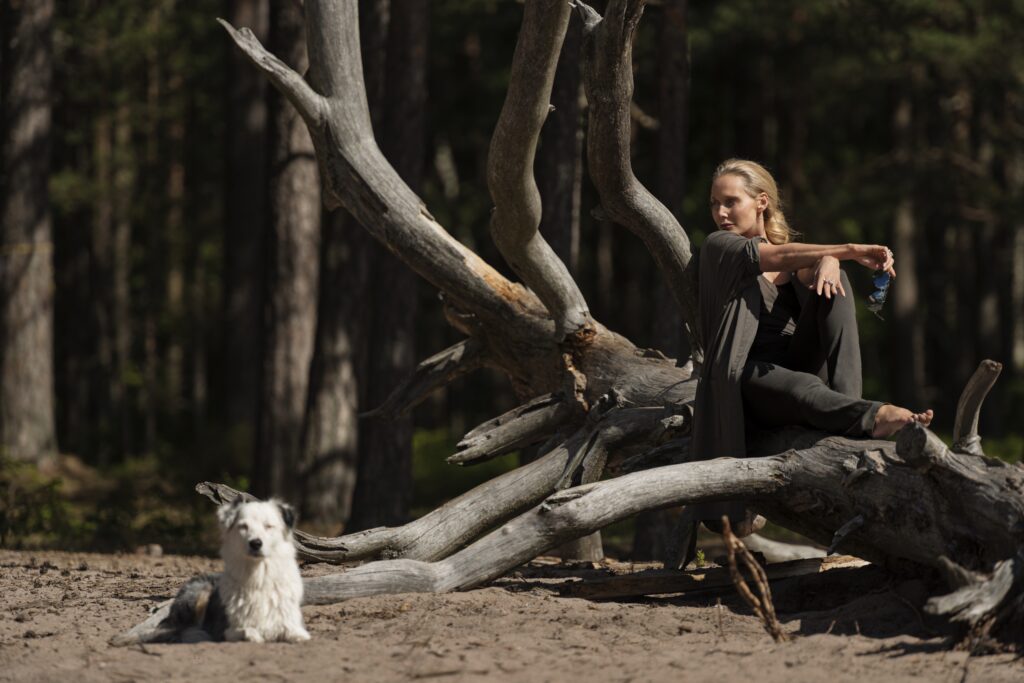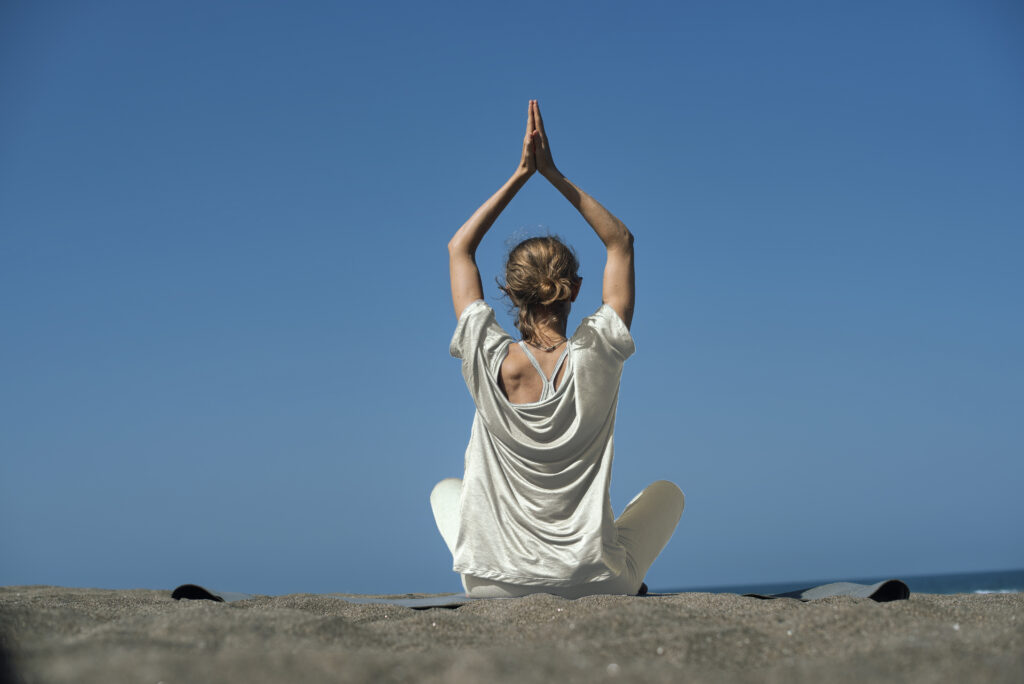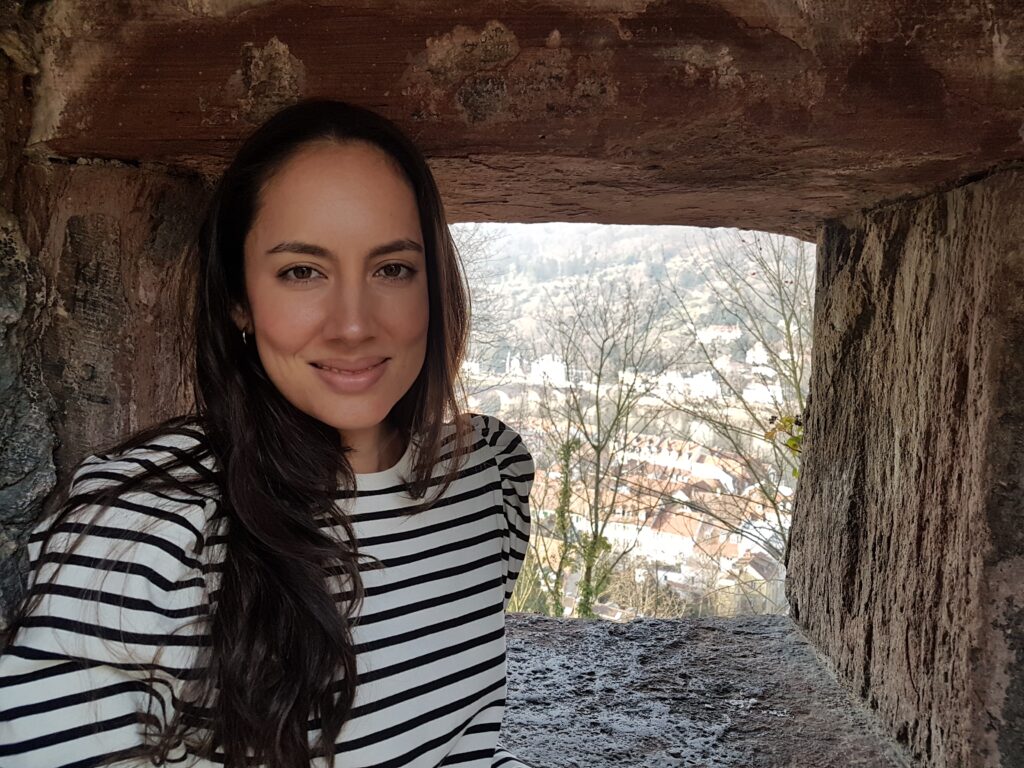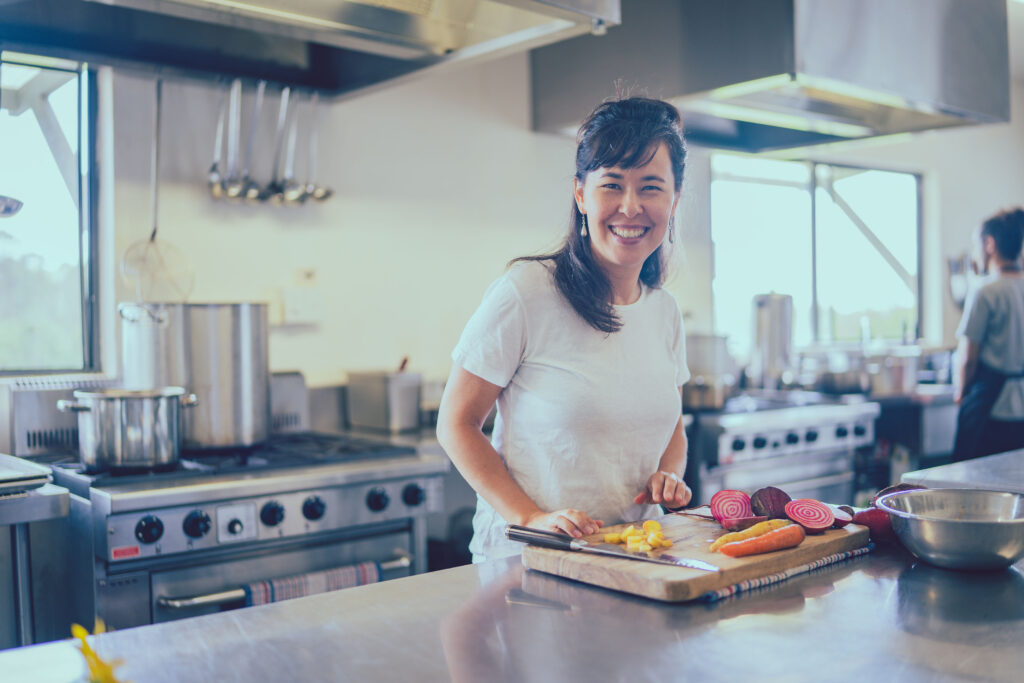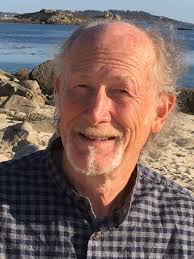
That’s what we’re looking for in Macrobiotics – to empower people to look after their own health. With most health problems, actually we can help ourselves.
L: When and where did you first start learning about Macrobiotics?
O: Well I was 24 years old and I was in London and I was teaching biology and really interested in health and how the body works. My girlfriend and I were going to meet one of my friends for a pub-lunch and a walk in the countryside. He had brought his girlfriend, I had my usual cheese ploughmans lunch and we went to sit in the garden and his girlfriend brought a lunchbox with some rice, aduki beans and salad and started telling us a bit about Macrobiotics. I wish I could remember her name now, I feel very grateful towards her. Anyway, she said that Michio Kushi, who was a big teacher of Macrobiotics was going to be giving a talk in a couple of weeks in London, so I decided to go and I was really impressed with his talk. He was using the concept of Yin and Yang and energy to explain why people develop different kinds of illnesses, different kinds of cancers, heart problems and all kinds of different problems. It just made so much sense to me that I just thought; ok yeah I really want to study this.
L: Wow so interesting, I didn’t know that story! What does the term Macrobiotics mean and where does it come from?
O: Well Macrobiotics started in Japan so it does have a Japanese flavour. It was started by a man called George Oshawa using a lot of traditional wisdom about life and health; how to keep ourselves well, how to heal certain health problems. In the 1930’s and then again in the 1950’s and 1960’s, he came to Europe and America and he was looking for a name to call his teaching. He was very well read and he saw that the Greeks had a kind of teaching called ‘Macrobios’ which means ‘large life’, which was based on eating simply in a balanced way and sometimes fasting, and exercising and breathing. So he thought, ok I’ll ‘nick’ that name and call it Macrobiotics. So that’s where the name came from.
L: How did your own health change since you transitioned to a Macrobiotic lifestyle?
O: A few interesting things happened in the first year. One good thing that happened was that I was 24, I was beginning to get shortsighted. So in the cinema, I had to sit right at the front, otherwise the screen was blurred. And as I started to eat Macrobiotically, gradually, my eyesight started changing. What I noticed was that I ate what Macrobiotics calls more ‘Yin foods’ such as eating a lot of fruits, desserts, alcohol or coffee, my eyesight would get worse again. So I became quite strict with myself and didn’t much of those foods and just ate lots of soups, grains, beans and nice veg dishes and after about nine months my eyesight actually became normal. So that was quite impressive. It’s not that Macrobiotics will correct every eye problem but it definitely worked for me. I am very grateful because I still don’t wear glasses and I’m going to be 68 next month!
L: Wow that’s amazing.
O: Something else was that when I got into Macrobiotics, for the previous two years I had been vegetarian and I ate a lot of cheese. Every week I would go out and buy a big block of cheese. I ate cheese on toast, cauliflower cheese, cheese sandwiches, everything cheese. That was my favourite food. So when I stopped eating dairy foods, my body naturally wanted to start cleansing. I got into Macrobiotics in August and by September, I started pouring out all this mucus. I didn’t have an infection, my body was just discharging. And then all of October, November and into December, my body was just pouring out all this mucus and that’s because cheese and dairy foods are very mucus forming but when we keep eating them, often we just suppress the body’s natural wanting to discharge the excess and then when you stop, the body goes into cleansing mode. So that was quite dramatic.
L: So those were the two main things?
O: Yeah well something else that meant a lot to me was that I started to become a lot more aware of energy; energy in my body, feeling energy, energy in plants and trees and people. That was really exciting for me because Macrobiotics was talking a lot about the whole oriental way of looking at things; not only is there a physical world but there is a much bigger energy world. Our body is working on energy going through different organs, meridians, chakras… So I started feeling energy more clearly and that was very exciting, it felt like it opened up a whole new world to me.
L: So including energy, what are some of the guiding principles used in Macrobiotics?
O: Sure, so I think that a lot of traditions around the world understand that there is life energy, which is flowing through us and all of nature. In China it’s called Chi, in India it’s called Prana and in Japan it’s called Ki. So we tend to use Ki in Macrobiotics. Modern Western culture is very scientific and very physically based and hasn’t yet found a way or really looked at a way of measuring Ki. Most traditional cultures are aware of it and use it to heal and help with health problems. Things like Acupuncture and Homeopathy work energetically; hands on healing, Qi gong, Tai Chi, Shiatsu. All of these things are working on getting the Ki flowing better. It’s just amazing to start looking at life and health in terms of energy as well as the physical body and the world of energy is much bigger than the physical world. With health, it’s just so useful. Things often change energetically before we get physical symptoms; our diet and lifestyle can create imbalances, maybe our Lung energy starts to get low and then we may see some signs in the face or cheeks may become more red, spotty or puffy and the energy in our Lung meridian may become ‘low’ and we may get some aching in the thumb, or if you feel the meridian you may just feel that the energy is low. If that goes on, we may start developing lung or respiratory problems; asthma, hay fever or become more prone to picking up infections, weaker immunity. So if my Lung energy is getting out of balance, let’s think about why that is. Have I been eating too many sweet foods, caffeine, alcohol or certain ‘yin foods’ that weaken the Lung energy? Maybe I need to do more exercise, deep breathing exercises, do things to strengthen my lungs, maybe do some Do-In exercises (which we teach on our courses), Shiatsu or Acupuncture and then we bring our Lung energy back into balance and then we avoid getting those kinds of problems. If we do have a lung problem, we can work on the energy on the meridian, we can also choose certain foods that particularly support the lungs to heal hay fever, bronchitis, asthma, getting frequent infections, low immunity and things like that. So it helps us to understand more deeply what is going on; read the signs that we’re getting imbalanced.
The central principal of Macrobiotics is eating more balanced foods like more gently warming foods like grains, beans, root vegetables and soups

L: So, it’s a holistic system that includes the energy balance of the meridians and organ systems.
O: Yes, and really the whole system is looking at balance. We can become too hot, too cold, too tense, too weak. It’s good to be active but we can become over-active and then exhaust ourselves or we can be under-active. And in terms of our food, Macrobiotics sees the more dense, rich, heating foods, especially meat, chicken, eggs, cheese, much more mildly fish and shellfish have a more Yang effect and if we overdo them, they create a lot of tension, they are overly rich and cause accumulation in the body which leads to cysts, lumps, skin problems and so on.
On the other end of the scale, if we have more strong Yin foods, which are much more stimulating which take energy out of the body: sugar, caffeine, really hot spices, alcohol, honey, recreational drugs, which feel at first like stimulators but in the long term these foods weaken us. So if we eat both of those extreme foods then it’s really detrimental to the body, whereas the central principal of Macrobiotics is eating more balanced foods like more gently warming foods like grains, beans, root vegetables and soups. And balancing this with some gently cooling foods helping our energy to come out, express ourselves and feel joy; like green vegetables, lighter grains, fruits, using some oil and maybe some plant milk. So we go for a balance between them.
So this is different in the West where people tend to think of foods as being ‘good or bad’. So for example fruit, fruit is healthy and therefore the more fruit you eat, the healthier you’re going to be. But it’s a matter of balance because fruit is soft, watery and cooling for the body. So eating a little fruit is generally healthy but if we eat too much it can make people cold and weaker. There’s also a lot of fruit sugar in fruit, which can create some inflammation in the body, it can make rheumatoid arthritis worse, asthma or hay fever worse. So there is no good or bad food, it’s just how much of it do we eat to be in balance. So it’s a different way of thinking to the Western way of thinking about food. So balance is very important.
L: When and why did you decide to create the International Macrobiotic School in the UK that now offers a multitude of in-person and online healthy lifestyle & cooking classes as well as professional courses?
O: That’s a good question. Well I was already teaching and I really liked teaching. Then I discovered Macrobiotics, this was in 1980, when Western science and medicine were saying that there is no connection between food and health. It wasn’t until the mid-1980’s that research came out that if we eat a lot of animal fats, we tend to get more heart disease. It seems unbelievable these days because there is so much information out there about the connection between our health and food. Macrobiotics had such an eloquent and really in-depth understanding of food and health. I really wanted to study it for myself and I just felt the world really needs to know this stuff. It needs to know how well we can look after our health through our daily food, exercise and creating balance in our lifestyle. So I wanted to start teaching it and tell as many people as possible – I’m still doing that now!
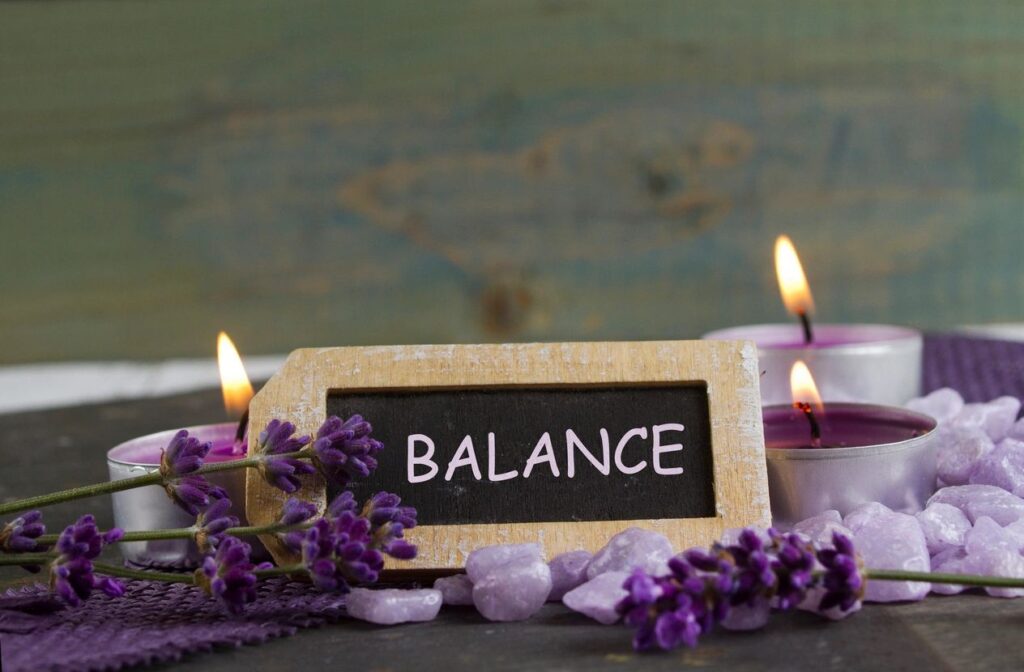
L: What kind of health issues can be helped with Macrobiotics? Can you give us a few examples of cases you’ve had that experienced major improvements in their health using the Macrobiotic principles?
O: Yes there are a lot of different things I could talk about. One is, there is certain kind of what we might call ‘Yang problems’ that are caused by excess tension or heat in the body. So for example, most severe headaches and migraines are associated with a lot of tension in the body. Some headaches have a different cause but most of the ones behind the eyes, the sides of the head, tension in the in neck; it’s actually happening on the Gallbladder and Liver meridians. The Liver meridian comes to the eyes, so getting pain behind the eyes, in the temples, very stiff painful neck, shoulders, etc. This is all coming from tension being held in the Liver and the Gallbladder. This is where looking at things in simple terms such as Yin and Yang, tension, weakness, can often reveal the causes of problems and how we can remedy them. It amazes me at how Western medicine is so good at understanding and helping certain problems and yet they don’t understand the cause of 95% of migraines and headaches! It’s just unbelievable, how could they not understand?
L: They aren’t looking for the cause.
O: They’re not looking for the cause and also they aren’t thinking holistically. In Western medicine a headache is a head problem whereas in Oriental medicine what is happening in the head depends on what is happening in the body because they are very connected. All of our parts of the body are connected, so when we’ve built up a lot of tension in our Liver and Gallbladder, which could be from eating a lot of heavy dense foods, a lot of animal foods – salt, meat, eggs, etc. Not eating enough fresh vegetables, fruits and light foods and sour foods that help the Liver to relax. Or if we’re really pushing ourselves very hard in our life, under a lot of stress, we build up a lot of tension in the Liver and Gallbladder or if we’re suppressing a lot of emotions, especially a lot frustration, suppressing our creativity, our life energy. Also that’s creating a lot of tension and heat in our Liver and Gallbladder and at some point it has to come out. One of the ways is it comes up to the head. So I’ve helped a lot of people with severe headaches and migraines gradually get out of those.
Similar thing for, you know a lot of women who are having very heavy painful periods, very debilitating periods; again, too much tension in the Liver and lower abdomen. And that’s something which eating lighter foods, being less busy, taking some stress out of life, a little more fun and lightness can really help the cycle come more into balance and become much less disruptive when the period comes or before with PMS.
So there are the ‘tension’ type problems and then the opposite is when we have more ‘Yin problems’ or deficiency type problems. A lot of people suffering from deep tiredness and exhaustion, or it goes further; suffering from chronic fatigue where people are really debilitated with lack of energy, brain fog, and aching muscles if they overexert themselves. So this is happening because there is a deficiency, a lack of energy in the body. You can’t measure this in physical terms; so Western medicine hasn’t really understood what is going on. It has started to recognize chronic fatigue as a problem, but it doesn’t know what to do about it. So, in Macrobiotics we understand that there is a real energy deficiency and we need to rebuild the person’s energy with building foods; whole grains, bean stews, rich soups, maybe some fish, shellfish, warm foods, root vegetables, etc. Rest, gentle exercises, breathing exercises to get more energy into the body, and sorting out any emotional blocks. I’ve helped quite a lot people rebuild and gradually get out of that chronic fatigue situation. So those are a few examples…Hay fever – it’s hay fever season. Ten percent of the UK population get hay fever. Which is happening again from a more a ‘Yin problem’; more weakness, more expansion in the mucus membrane inside the nose. So it’s swollen and the pollen is irritating and then people get the hay fever symptoms like swelling up, mucus, running eyes, etc. Generally people can heal that over one to two years by avoiding the strong Yin foods like sugar, tropical fruits, caffeine, etc. And eating a more balanced plant based diet.
L: It’s definitely more of a long-term solution, a lifestyle solution.
O: Yes and that’s what we’re looking for in Macrobiotics – to empower people to look after their own health. With most health problems, actually we can help ourselves. Somewhat serious ones, we really need Western medicine but there are a whole lot of health problems which very often Western medicine is not very good at helping like headaches, migraines, period problems, hay fever, etc. Making dietary and lifestyle changes and sometimes doing some emotional healing can really help and it’s within everyones’ power to do that. Macrobiotics is very empowering.
L: Right.
O: It takes a lot of fear out of life – we can have a lot of control over our health, which is just great!
L: Yeah I like that. So, do you have to be vegan to be Macrobiotic? Can ‘regular’ people use these Macrobiotic principles?
O: Yes, Macrobiotics is not an absolute diet where you have to eat these foods and you must never touch these other foods, because it’s all about creating balance in the body. So every step people take towards eating more balanced foods like whole grains, beans, lentils, nice fresh vegetables, organic if possible, fruits, seeds, nuts and then making soups and nice desserts out of these kinds of ingredients is really going to experience improvements in their health. At the same time, if they can cut down on meat, eggs and cheese and fatty dense Yang foods and also cut down on sugar; a bit of alcohol can be fine for the health but drinking a lot of alcohol and caffeine really weakens the body. With that people can experience better health.
You had a question about veganism; a lot of people into Macrobiotics are plant-based; about 95% of the food is grains, beans and plant-based but people usually eat a little fish or shellfish or some people who don’t want to eat fish may eat eggs occasionally because those animal foods are more concentrated and bring stronger energy into the body. Some people decide to do vegan-Macrobiotics, which you can do and actually if you want to be vegan, it’s really helpful to understand this idea of balance because a lot of people who eat a vegan diet get a lot of health problems. It’s easy for vegans to become too cold and weak after a period of time. If we create balance – In Macrobiotics we’re making a lot of warming and energizing foods like whole grains, bean stews, broths, soups, etc. to keep people strong when they are eating vegan.
L: So, aside from dietary recommendations, what can a person expect during a Macrobiotic Health Consultation?
O: A good question, we tend to use food a lot because food is such a healer and such a good way of maintaining our health. Exercise is really important in our life; lots of different forms of exercise. It’s important to find the kind of exercise that you really enjoy. Exercise systems like Yoga, we teach Do-In which is working on the meridians, Tai Chi, Gi gong, etc. It’s quite good to practice one of those systems because they are working on the whole body, whereas if we’re doing a sport, we may just be working certain muscles and not using other parts of the body. We can also use very specific exercises to help certain health problems. Breathing and especially breathing with the abdomen as well as the chest is very central for health. Creating a more balanced lifestyle, balance between work and activity, rest and play; time with people and time on our own, getting a good amount of sleep and a lot of other important lifestyle factors. Emotionally, sometimes if we’re holding a lot of emotions like if we’re holding a lot of fear, anger or sadness this can have a big effect on how we feel emotionally and psychologically but also it can have a very big effect on the body as well, so then it’s important to have ways of feeling those emotions and releasing them; releasing the fear or anger or frustration. Maybe going back and finding out when they started and finding ways of releasing them from the body because they can cause a lot of tension and blockage in the body.
On a deeper level, a soul level, a lot of people have the understanding that we’ve been given this amazing life and we’re on our life path and if we go deeply into ourselves, actually, there are certain things we want to do and experience and it’s important to follow our inner voice. If we’re really off track – we’ve got lost, we’re doing the things which society expects or our parents told us to do, we can become deeply unhappy because we aren’t doing what we really want to do and what is going to make us happy. If we are living from our deeper self or soul, we will also be doing the things which are really going to benefit other people in the world. So it’s helping people tune into what we want to be doing in our life and what is this life really about for you? What direction do you want to be going in now? Sometimes that makes a really big difference to people. People can get stuck and find it difficult to make dietary and lifestyle changes until they’re really in touch with themselves deeply and what they really want to be doing with their lives. That brings a lot of energy and passion into our life so people want to look after themselves better.
L: So it’s really a holistic experience having a Macrobiotic health consultation!
O: Yes very holistic, because all of these things are very connected. That’s the interesting thing about Macrobiotics or a holistic way of looking after ourselves. So we need to look at the physical, emotional, energetic, mental and our spiritual side.
L: And why do you think we need to move towards a more Macrobiotic approach to health for us and the planet, for the future?
O: Well it’s a really good way of promoting our health, to have really good energy, having a clear mind, feeling lighter, calmer…I’ve found it incredibly useful in my life to keep myself well – a few times getting a few minor health problems and sorting them out myself. So it’s very good for looking after our health, it’s very good as a basis for our emotional health because if we have big imbalances in the body then it tends to throw us around emotionally; we tend to feel more emotionally unstable. It’s also great for developing awareness, more mindfulness. If we are eating more these kind of more balanced calming foods, then we experience more balance, it’s much easier to be quieter inside, we can be more mindful, more aware more conscious.
So there are a lot of benefits for us but also for our children. I raised my children with Macrobiotics. Of course to start off with they ate really well and then with school gradually the sugar came in along with other things but they still eat pretty well and experience good health and very energetic in their 30’s. So a lot of personal benefits and it just makes so much sense on a social level, we need much less health care. If your following Macrobiotics, you’re learning how to look after your own health; you need much less health care, we’re not taking so much from society in terms of health care expenses. If we need it – great go for it. But if we need it much less then we’re not taking so much in that way.
We tend to eat more locally grown foods rather than foods which have been shipped from the other side of the world or a big distance so that’s helping the environment, decreasing the amount of carbon produced. Eating plant-based really reduces the amount of carbon that is being produced anyway. And also processed foods – a lot of people in this country become vegan but they are eating vegan bacon, vegan cheese, vegan burgers and these highly processed foods take a lot of energy to be produced. Whereas if we eat grains, beans, vegetables, seeds, etc less carbon is produced. It takes a bit of energy to grow them but there’s no energy being taken to process them. So, Macrobiotics is very environmentally friendly. Also, I was reading recently, I can’t remember the number exactly but something like 50% of the land surface of the world is now being used to grow food. We keep pushing back the Amazonian rain forest, the Indonesian forest is disappearing with all the birds, orangutans and wildlife for producing palm oil. We’re taking more and more land just to grow food and actually if we all became plant-based, then we would need much less land and we could start re-wilding big areas, which would just be fantastic and much better and especially when we’ve taken so much from the environment. Wouldn’t that be great if we could re-wild 10% of the surface of the world again and really let wildlife flourish!
L: That’s a lot of good reasons…
O: And all of it coming from changing the way we eat! Changing the way we eat is so powerful for us and also for the environment and the planet.
L: Yes that’s true. And so last question, what is your goal, mission moving forward? With the school, with your work and maybe personally?
O: Well I think one personal goal is really enjoying my life the most I can. I really enjoy running the school, teaching and work but I have been a bit serious and over-working in the past and I’m really trying to create more balance. I had a partner who was really into holidays and being in nature more and I love being in nature so I’m really wanting to enjoy my life – I’m going to be 68 next month and I hope I have another 25 years of active life. I really want to enjoy this time. I want to do less of the things I don’t enjoy, like office work and doing more of the things I do enjoy like teaching and giving consultations, I want to write some books because I have been teaching for a long time…and make a lot of videos and just get what I know out to a lot more people.
L: Okay so on a bigger scale.
O: Yes. It feels like with YouTube and the Internet that we can reach a lot more people these days. And I have about three books I really want to write but writing books is quite time consuming so it’s trying to make the time to do that.
L: Yes okay great well thank you so much for your time and all the very useful information about Macrobiotics.
O: It’s a real pleasure Lena. Thank you very much for asking me.

